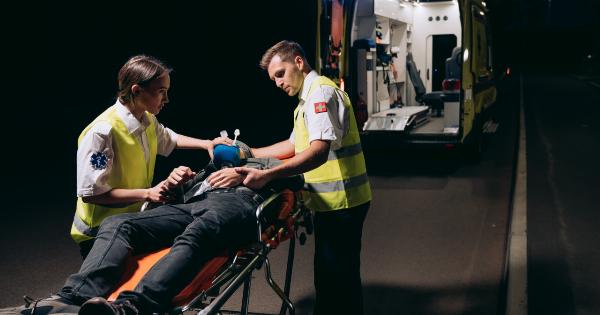Proper blood circulation is essential for maintaining good overall health. It ensures that oxygen and nutrients are delivered to every part of the body while waste products are efficiently removed.
However, many people suffer from insufficient blood circulation, which can lead to various health issues. Recognizing the symptoms of poor circulation is crucial as it allows for timely intervention and appropriate treatment. In this visual guide, we will explore the 10 common symptoms of insufficient blood circulation that you need to look out for.
1. Cold hands and feet
If you frequently experience cold hands and feet, it may be a sign of poor blood circulation. Inadequate blood flow to the extremities can make your hands and feet feel cold, even in warm conditions.
This symptom is often caused by vasoconstriction, where blood vessels narrow and limit the blood flow to these areas.
2. Numbness or tingling
Numbness or tingling sensations, also known as paresthesia, can occur when there is insufficient blood supply to certain parts of the body.
This symptom is commonly felt in the hands, feet, and limbs, and may indicate nerve damage or restricted blood flow. If you frequently experience numbness or tingling, it is important to consult a healthcare professional for a proper diagnosis.
3. Muscle cramps
Poor blood circulation can also manifest as muscle cramps, especially during physical activity. When muscles do not receive an adequate supply of oxygen and nutrients, they can become strained and cramped.
Muscle cramps can occur in various parts of the body but are commonly experienced in the legs and feet. Stretching exercises, staying hydrated, and improving blood circulation through regular physical activity can help alleviate muscle cramps.
4. Swelling of extremities
Swelling, particularly in the hands, feet, and ankles, is often a result of poor blood circulation. When blood flow is compromised, fluid can accumulate in the tissues, leading to swelling.
This symptom, known as edema, can be caused by various factors, including heart or kidney problems, deep vein thrombosis, or lymphatic issues. Consult a medical professional if you experience persistent swelling.
5. Slow healing of wounds
Insufficient blood circulation can impair the body’s ability to heal wounds. When tissues do not receive enough oxygen and nutrients, the healing process becomes slower and more challenging.
If you notice that your wounds take longer than usual to heal or are prone to infections, it may indicate poor blood circulation. Diabetes and peripheral artery disease are common conditions associated with delayed wound healing.
6. Fatigue and weakness
Feeling constantly tired and weak could be a symptom of insufficient blood flow to the muscles and organs. Inadequate oxygen and nutrient supply can make you feel fatigued even after minimal exertion.
If you consistently experience fatigue and weakness, it is advised to consult a healthcare professional as it may be indicative of an underlying health condition.
7. Hair loss
Thinning hair or hair loss can be a sign of poor blood circulation to the scalp. Hair follicles require a steady supply of oxygen and nutrients to grow and maintain healthy hair.
When blood circulation is compromised, hair follicles may become weakened, leading to hair loss. If you are experiencing excessive hair loss, it is important to consult a dermatologist to determine the underlying cause.
8. Pale or blue-colored skin
Inadequate blood circulation can result in pale or bluish discoloration of the skin. When blood flow is restricted, the skin may not receive an adequate amount of oxygen, causing it to appear paler than usual.
In some cases, particularly when blood oxygen levels are significantly reduced, the skin can have a bluish tint, known as cyanosis. If you notice persistent skin discoloration, seek medical attention.
9. Cognitive difficulties
Poor blood circulation can also affect cognitive function. Inadequate blood flow to the brain can lead to difficulties in concentration, memory loss, and increased forgetfulness.
If you frequently experience cognitive difficulties, it is important to consult a healthcare professional to determine the underlying cause and appropriate treatment options.
10. Varicose veins
Varicose veins are enlarged, twisted veins that most commonly appear in the legs and feet. They are often caused by weakened blood vessels and valves, making it difficult for blood to flow properly against gravity.
Varicose veins can be painful, cause discomfort, and be visually displeasing. Obesity, pregnancy, prolonged standing, and a sedentary lifestyle are factors that contribute to the development of varicose veins. If you notice the presence of varicose veins, consult with a healthcare professional for appropriate management options.
In conclusion
Insufficient blood circulation can give rise to several symptoms that should not be ignored. If you experience any of the mentioned symptoms, it is crucial to seek medical advice to determine the underlying cause and receive appropriate treatment.
Lifestyle modifications such as regular exercise, a balanced diet, and avoiding prolonged periods of inactivity can help improve blood circulation. Remember, a healthy blood circulation system is essential for overall well-being.





























